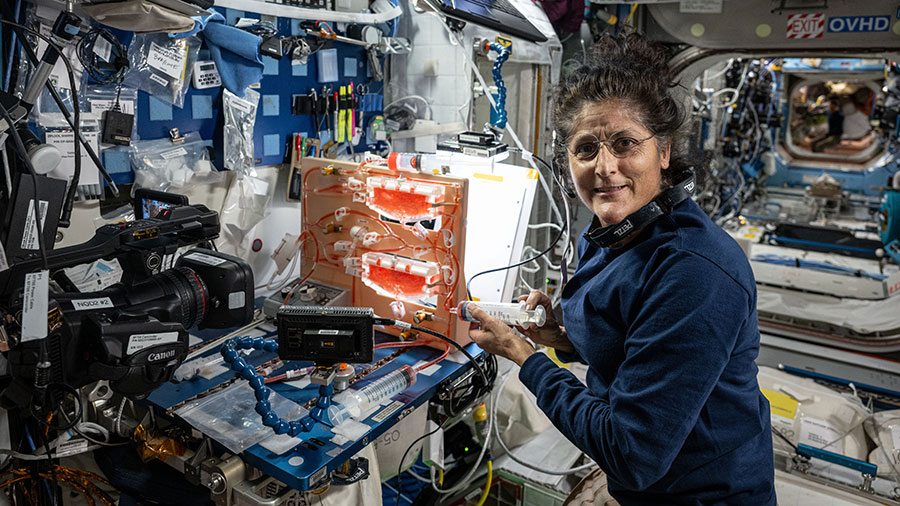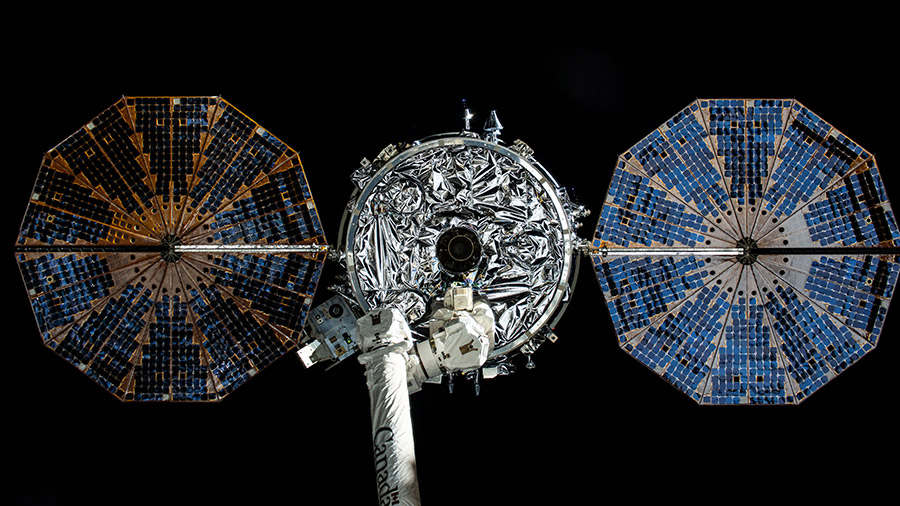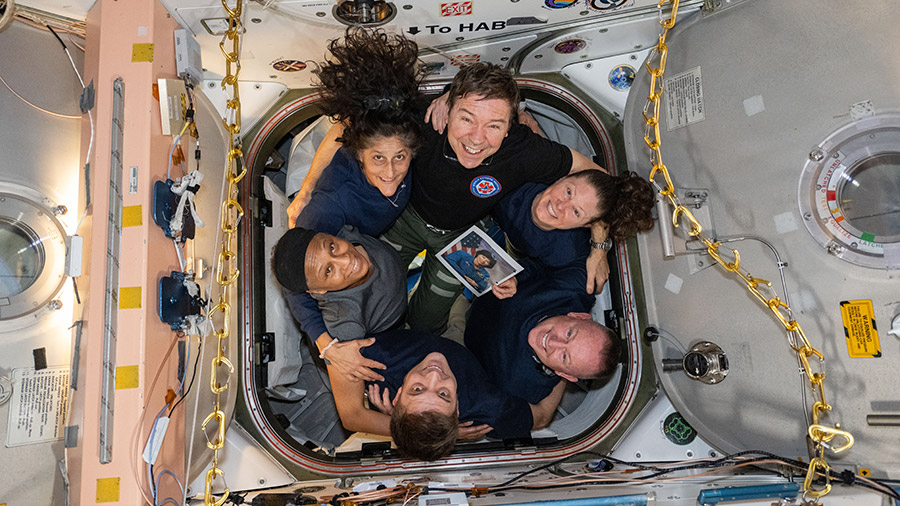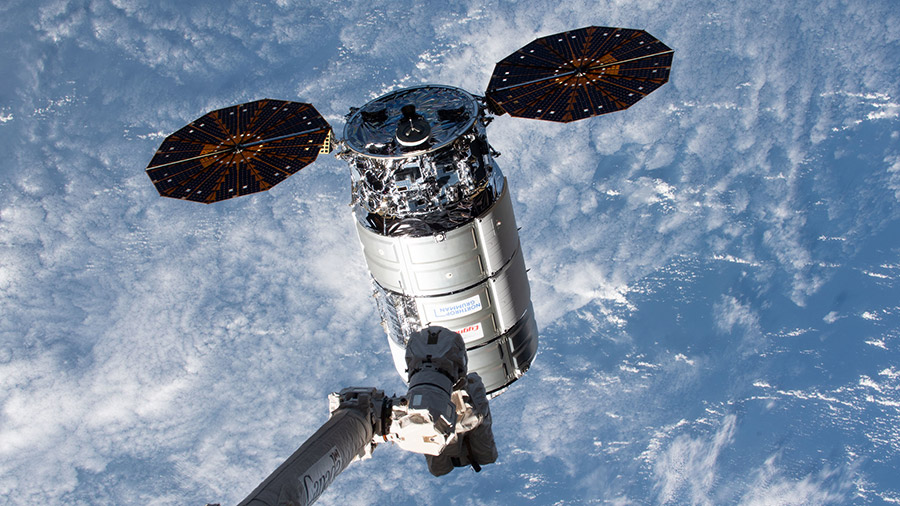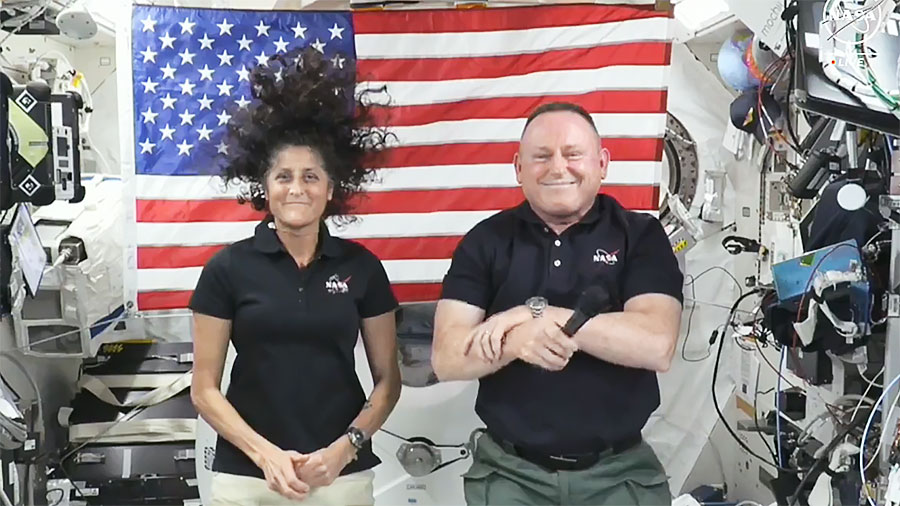
It was an off-duty day at the end of the week for most of the crew members aboard the International Space Station. The astronauts and cosmonauts relaxed most of Friday with time set aside for their daily workouts, light household duties, and public affairs activities.
Two cosmonauts representing Expedition 71, Commander Oleg Kononenko and Fight Engineer Nikolai Chub, had a busy day however, packing a cargo craft, transferring fluids, and inspecting lab hardware. Kononenko, who is on his fifth space station mission, continued loading the Progress 87 resupply ship with trash and discarded gear ahead of the spacecraft’s departure in mid-August. He also inspected surfaces inside the vestibule in the aft end of the Zvezda service module where the Progress 87 is docked. Chub also performed inspection work in the aft end of Zvezda then worked on orbital plumbing tasks transferring fluids from the Roscosmos segment of the station into the Progress 87 vehicle.
Starliner Commander Butch Wilmore and Pilot Suni Williams, both NASA astronauts representing Boeing’s Crew Flight Test, spent a few moments inside the spacecraft docked to the Harmony module’s forward port. The duo entered Starliner in the afternoon, turned on its lights and displays to access tablet computers, then powered them down after recharging overnight.
The rest of the Expedition 71 crew, including NASA Flight Engineers Tracy C. Dyson, Matthew Dominick, Mike Barratt, and Jeanette Epps, along with Roscosmos Flight Engineer Alexander Grebenkin, took a break from their daily research and maintenance activities. The quintet used their day off for personal time with calls to family, recreation, looking at the Earth below, and more. The crewmates also continued their daily workouts on the treadmill, the exercise cycle, and advanced resistive exercise device to maintain muscle and bone health in microgravity.
Learn more about station activities by following the space station blog, @space_station and @ISS_Research on X, as well as the ISS Facebook and ISS Instagram accounts.
Get weekly video highlights at: https://roundupreads.jsc.nasa.gov/videoupdate/
Get the latest from NASA delivered every week. Subscribe here: www.nasa.gov/subscribe

